#chicago anarchists
Text
Proof that Meghan Markle & Like a Spare are invested in the demise of America's great cities🤡
youtube
Numpties are forecasting future teenage criminal activity based on local weather projections🤡🤦♂️🤦♀️. Cities like Chicago are allowing themselves to be held captive by online plans for 'part 2' of Downtown chaos.
Instead of Just Harry "monitoring & reporting" REAL threats to our democracy, he & wife are funding, fueling, and promoting it!
Lenora Dennis Chicago's Good Samaritan
youtube
youtube
youtube
The Color of Change (Soros) State's Attorney is Kim Foxx who allowed Jussie Smollett to skate.

Morally Bankrupt.


#clown#wicked#morally bankrupt#chicago#teenagers#color of change#anarchists#blm#domestic terrorism#sussex#brf#megxit#soros#kim foxx#jussie smollett#good samaritans#nyc#los angeles#Youtube
15 notes
·
View notes
Photo

Fred Hampton Speaks, Anarchist Black Cross Chicago, Chicago, IL, 2018 (pdf for zine printing here) (pdf for e-reading here). Layout by Anarchist Black Cross Chicago
#graphic design#pamphlet#cover#fred hampton#chicago anarchist black cross#anarchist black cross#2010s
24 notes
·
View notes
Text
Passionate Patriots: 1968 DNC Nightmare in Chicago
.
Source:FRS FreeState
The Democratic Party cost themselves the presidential election of 1968 and a chance to win the White House for a third straight time and 8-10 presidential elections, going back to 1932 with FDR. To go along with another Democratic Congress because of how divided they were on the Vietnam War. A lot of that can be blamed on President Johnson’s handling of the Vietnam War, but…

View On WordPress
#1968#1968 Democratic National Convention#1968 Presidential Election#America#Anarchists#Anti-War Movement#Chicago#Communists#Counter-Culture#Democratic Party#Far Left#Hubert Humphrey#Illinois#Lyndon Johnson#New Left#Occupy Wall Street#Richard Daley#Socialists#Students For a Democratic Society#The 1960s#United States#Vietnam War
3 notes
·
View notes
Text
mojo dojo casa house
Howdy folks! Sorry for the delay, I was, uhhhh covering the Tour de France. Anyway, I'm back in Chicago which means this blog has returned to the Chicago suburbs. I'm sure you've all seen Barbie at this point so this 2019 not-so-dream house will come as a pleasant (?) surprise.

Yeah. So this $2.4 million, 7 bed, 8.5+ bath house is over 15,000 square feet and let me be frank: that square footage is not allocated in any kind of efficient or rational manner. It's just kind of there, like a suburban Ramada Inn banquet hall. You think that by reading this you are prepared for this, but no, you are not.

Scale (especially the human one) is unfathomable to the people who built this house. They must have some kind of rare spatial reasoning problem where they perceive themselves to be the size of at least a sedan, maybe a small aircraft. Also as you can see they only know of the existence of a single color.

Ok, but if you were eating a single bowl of cereal alone where would you sit? Personally I am a head of the table type person but I understand that others might be more discreet.

It is undeniable that they put the "great" in great room. You could race bicycles in here. Do roller derby. If you gave this space to three anarchists you would have a functioning bookshop and small press in about a week.

The island bit is so funny. It's literally so far away it's hard to get them in the same image. It is the most functionally useless space ever. You need to walk half a mile to get from the island to the sink or stove.

Of course, every McMansion has a room just for television (if not more than one room) and yet this house fails even to execute that in a way that matters. Honestly impressive.

The rug placement here is physical comedy. Like, they know they messed up.

Bling had a weird second incarnation in the 2010s HomeGoods scene. Few talk about this.

Honestly I think they should have scrapped all of this and built a bowling alley or maybe a hockey rink. Basketball court. A space this grand is wasted on sports of the table variety.
You would also think that seeing the rear exterior of this house would help to rationalize how it's planned but:

Not really.
Anyways, thanks for coming along for another edition of McMansion Hell. I'll be back to regular posting schedule now that the summer is over so keep your eyes peeled for more of the greatest houses to ever exist. Be sure to check the Patreon for today's bonus posts.
Also P.S. - I'm the architecture critic for The Nation now, so check that out, too!
If you like this post and want more like it, support McMansion Hell on Patreon for as little as $1/month for access to great bonus content including a discord server, extra posts, and livestreams.
Not into recurring payments? Try the tip jar, because media work is especially recession-vulnerable.
#architecture#design#mcmansion#mcmansions#ugly houses#interior design#bad architecture#2010s#2019#Illinois
14K notes
·
View notes
Text
imagine being a humble chicago anarchist opening up the morning paper to see that the guy all your comrades told you to keep away from b/c they thought he was a cop fucking shot william mckinley lmao
853 notes
·
View notes
Text
From the Seattle IWW, written by FW Noah in 2022: "The True History of May Day."
In the United States and many other countries, there are labor days that celebrate the working class contributions to the economy, the infrastructure, and the nation as a whole. While many of these holidays give great praise and pomp towards working class people, they often overlook the history that led up to the foundation of such celebrations, and what the foundations were really laid upon. Much of the early labor history is filled with great strife, conflict, death and destruction often directed towards working class individuals, who attempted to organize their lives in a way to break off the shackles of exploitation and capitalism as a whole.
May Day began as a remembrance of the Haymarket Affair of 1886, when several anarchists who were supporting a protest for the 8 hour day in the city of Chicago were falsely accused by the police of detonating a bomb, and were executed as a result despite nationwide demands for their clemency. Since that day, every May the 1st became a day of celebrating the toil and contributions of workers in society and the struggle for better working class conditions, and uplifted the voices of those who were often marginalized or ignored by the upper classes. However, the United States of America has a different official Labor Day, established by the federal government in 1894. The change in date was intended to distract workers from the more radical origins of the holiday. This began a trend in the larger labor movement away from uniting the working class as one body with common interests and towards formalizing relations between a disadvantaged class and those with the power and wealth to decide the course of negotiations.
154 notes
·
View notes
Text
Hello!
My 🖋 name is Healy Matthews. I'm an up-and-coming author who enjoys writing queer romance novels, usually of the historical and/or fantasy varieties.
I've decided to take the leap and dive into the early stages of self-publishing my debut novel WIELDER. I'm still deciding precisely what the next steps will be, but it's likely that I will be initially publishing through a Kickstarter campaign sometime this summer.
Meet Mona and Pippa, the main characters!


WIELDER is a sapphic fantasy novel that walks the line between young adult and new adult. The summary is as follows:
Time is fragile. It is cracking, breaking, and coming apart at the seams, and Pippa Pennippa has no idea. As an aspiring journalist from Chicago, Pippa sees the past as her muse. She draws inspiration from it, looking to its stories to forge her future.
Little does Pippa know that nearly two hundred years earlier, another girl is looking to forge in her own future. Mona Spirea’s dream is to be a Forger- a blacksmith who creates weapons for supernatural cult of time-travelers that call themselves Wielders. It is her sacred duty, along with others of her race, to utilize their magic and the weapons at their disposal to prevent time from collapsing in on itself. Mona enjoys the rituals and regimen of the Wielders, and she believes in her mandate. She certainly does not expect Pippa, a girl from the future, to break into both her home and her heart.
As Pippa discovers her identity as a Wielder, the Anarchists, a group of rogue time-travelers, begin to close in. Both Mona and Pippa must fight through betrayals brought by those they love. They will need to overcome oppression from those taking advantage of their own authority if they want to keep time itself from disintegrating… and save countless lives. But it seems that Pippa must face another obstacle as well: the fact that she is unwittingly in possession of one of the most powerful - and dangerous - magical talismans in existence.
If you're a fan of weapon-obsessed Vicrorian autistic lipstick lesbians, bisexual accidental-time-travelers who really just want a cup of coffee, pretty dresses from different time periods, disaster sunshine musicians from 1920s Harlem, stories that explore trauma, general timey-wimey weirdness, or gossamer-and-gothic vibes, this book is for you.
#new books#publishing#queer books#romance books#sapphic#sapphic books#wlw#bisexual#lesbian#diverse books
62 notes
·
View notes
Text

Happy May Day!
People have observed May Day as a festival of abundance for millennia. A century and a half ago, it became a workers' holiday expressing solidarity with the anarchist organizers in Chicago who were put to death in retaliation for the Haymarket riot.
They were fighting for a world without capitalism or the state—as we do today.
http://crimethinc.com/podcast/1
290 notes
·
View notes
Text
Works written decades ago, often by female Jewish immigrants, were dismissed as insignificant or unmarketable. But in the past several years, translators devoted to the literature are making it available to a wider readership. -
By Joseph Berger
Feb. 6, 2022
In “Diary of a Lonely Girl, or the Battle Against Free Love,” a sendup of the socialists, anarchists and intellectuals who populated New York’s Lower East Side in the early 20th century, Miriam Karpilove writes from the perspective of a sardonic young woman frustrated by the men’s advocacy of unrestrained sexuality and their lack of concern about the consequences for her.
When one young radical tells the narrator that the role of a woman in his life is to “help me achieve happiness,” she observes in an aside to the reader: “I did not feel like helping him achieve happiness. I felt that I’d feel a lot better if he were on the other side of the door.”
In a review for Tablet magazine, Dara Horn compared the book to “Sex and the City,” “Friends” and “Pride and Prejudice.” Though it was published by Syracuse University Press in English in 2020, Karpilove, who immigrated to New York from Minsk in 1905, wrote it about a century ago, and it was published serially in a Yiddish newspaper starting in 1916.
Jessica Kirzane, an assistant instructional professor of Yiddish at the University of Chicago who translated the novel, said that her students are drawn to its contemporary echoes of men using their power for sexual advantage. “The students are often surprised that this is someone whose experiences are so relatable even though the writing was so long ago,” she said in an interview.
Yiddish novels written by women have remained largely unknown because they were never translated into English or never published as books. Unlike works translated from the language by such male writers as Sholem Aleichem, Isaac Bashevis Singer and Chaim Grade, Yiddish fiction by women was long dismissed by publishers as insignificant or unmarketable to a wider audience.
But in the past several years, there has been a surge of translations of female writers by Yiddish scholars devoted to keeping the literature alive.
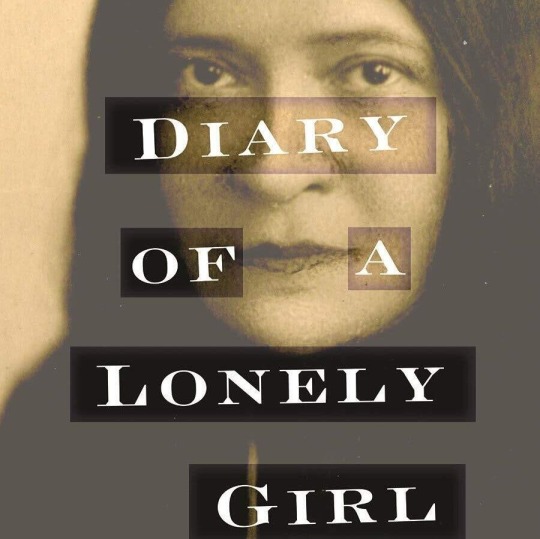

Madeleine Cohen, the academic director of the Yiddish Book Center in Amherst, Mass., said that counting translations published or under contract, there will have been eight Yiddish titles by women — including novels and story collections — translated into English over seven years, more than the number of translations in the previous two decades.
Yiddish professors like Kirzane and Anita Norich, who translated “A Jewish Refugee in New York,” by Kadya Molodovsky, have discovered works by scrolling through microfilms of long-extinct Yiddish newspapers and periodicals that serialized the novels. They have combed through yellowed card catalogs at archives like the YIVO Institute for Jewish Research, searching for the names of women known for their poetry and diaries to see if they also wrote novels.
“This literature has been hiding in plain sight, but we all assumed it wasn’t there,” said Norich, a professor emeritus of English and Judaic Studies at the University of Michigan. “Novels were written by men while women wrote poetry or memoirs and diaries but didn’t have access to the broad worldview that men did. If you’ve always heard that women didn’t write novels in Yiddish, why go looking for it?”
But look for it Norich did. It has been painstaking, often tedious work but exciting as well, allowing Norich to feel, she said, “like a combination of sleuth, explorer, archaeologist and obsessive.”
“A Jewish Refugee in New York,” serialized in a Yiddish newspaper in 1941, centers on a 20-year-old from Nazi-occupied Poland, who escapes to America to live with her aunt and cousins on the Lower East Side. Instead of offering sympathy, the relatives mock her clothing and English malapropisms, pay scant attention to her fears about her European relatives’ fate and try to sabotage her budding romances.
Until Norich’s translation was published by Indiana University Press in 2019, there had been only one book of Yiddish fiction by an American woman — Blume Lempel — translated into English, Norich said. (Two non-American writers had been translated: Esther Singer Kreitman, the sister of Isaac Bashevis Singer, who settled in Britain, and Chava Rosenfarb, a Canadian who translated herself.)

The new translations are stirring a smidgen of optimism among Yiddish scholars and experts for a language whose extinction has long been fretted over but has never come to pass. Yiddish is the lingua franca of many Hasidic communities, but their adherents rarely read secular works. And it has faded away in everyday conversation among the descendants of the hundreds of thousands of East European immigrants who brought the language to the United States in the late 19th century.
The new translations are being read by people interested in everyday life in East European shtetls and immigrant ghettos in the United States as told from a woman’s perspective. They are also being read by students at the nation’s two dozen campuses with Yiddish programs. “Students were often surprised by how unsentimental these female novelists are, how wide-ranging are their themes, and how frank they are about female desire,” Norich said.
With a grant from the Yiddish Book Center, a 42-year-old nonprofit that seeks to revitalize Yiddish literature and culture, Norich is now translating a second novel: “Two Feelings,” by Celia Dropkin (1887-1956), a Russian immigrant who was admired for her erotically charged poems but never known as a novelist.
“Two Feelings” had been serialized in The Yiddish Forward in 1934 and then forgotten. It tells the story of a married woman who struggles to reconcile her feelings for, as Norich put it, a “husband she loves because he is a good man, and a lover she loves because he is a good lover though not a good man.”


One recent volume, “Oedipus in Brooklyn,” is a collection of stories by Blume Lempel (1907-99), the daughter of a Ukrainian kosher butcher. After spending a decade in Paris, she, her husband and their two children immigrated to New York in 1939, where she began writing for Yiddish newspapers.
In an introduction, her translators, Ellen Cassedy and Yermiyahu Ahron Taub, describe Lempel as “drawn to subjects seldom explored by other Yiddish writers in her time: abortion, prostitution, women’s erotic imaginings, incest.” Her sentences, they add, “often evoke an unsettling blend of splendor and menace.”
In promotional copy for the book, Cynthia Ozick called it “a splendid surprise” and asked: “Why should Isaac Bashevis Singer and Chaim Grade monopolize this rich literary lode?”
The recent books have mostly been published by academic presses in small runs, many of them financed by fellowships and stipends from the Yiddish Book Center. Despite the books’ contemporary themes, said Cohen, the center’s academic director, it has been an uphill battle to persuade mainstream trade publishers to acquire titles by women writers who are generally unknown and previously untranslated.
The scholars work independently, though they occasionally meet at conferences and panel discussions. Their life stories offer a window into the evolution of Yiddish.
Kirzane learned the language not in her childhood home but at the University of Virginia and in a doctoral program at Columbia University. Norich, the daughter of Yiddish-speaking Holocaust survivors from Poland, was born after the war in a displaced persons camp in Bavaria and was raised in the Bronx, continuing to speak Yiddish with her parents and brother.
When her daughter Sara was born, she made an effort to speak only Yiddish to her but gave up when Sara was 5. “You need a community to have a language grow,” she said.
These translators believe that the newly translated novels by women will enrich the teaching of Yiddish. Yiddish is, after all, called the mamaloshen — mother’s tongue — and a woman’s perspective, they said, has long been missing.
107 notes
·
View notes
Photo

On this day, 27 June 1905, the revolutionary union the Industrial Workers of the World (IWW) was founded in Chicago, Illinois. One of the first multiracial unions in the US, the IWW advocated all workers uniting into one big union, taking control of society and abolishing capitalism. It's founding conference lasted from June 27 to July 8, and was attended by over 200 workers including legendary labour organisers like Mother Jones, Big Bill Haywood and leading Black anarchist Lucy Parsons. It organised large swathes of previously unorganised workers in the US, and pioneered many innovative new types of industrial action like slow-downs and sabotage. Parsons at its founding convention delivered a speech arguing for sit-in strikes, which would sweep the US 30 years later, declaring: "My conception of the strike of the future is not to strike and go out an starve, but to strike and remain in and take possession of the necessary property of production." The IWW won big improvements for hundreds of thousands of workers, and for its troubles faced savage repression from employers, with many organisers beaten, jailed and murdered. It also spread to other countries including Chile, Australia and South Africa. It still exists today, although much smaller than it was, and its members are active in many organising projects. We've got a number of great books where you can learn more about the IWW, as well as other items celebrating the union, in our online store. Proceeds help fund our work: https://shop.workingclasshistory.com/collections/all/iww https://www.facebook.com/photo.php?fbid=651651877008031&set=a.602588028581083&type=3
188 notes
·
View notes
Photo

Monument to the Haymarket Martyrs, Forest Home Cemetery, Forest Park, Illinois( 1893) Uncredited and Undated Photograph
It was the judicial murder of the Haymarket Martyrs, radicals and union activists, that brought May Day to be the International Workers Holiday. Strikes had been held in numerous cities across the United States beginning on May 1, 1886, calling for decent wages and recognition of workers’ unions. Some of those demonstrations became violent as a result of attempts by police and bosses to suppress them. On May 4, 1886 in Haymarket Square, Chicago, a demonstration was held to protest the police killing of striking workers at the McCormick Reaper Works the day before. At that demonstration, a bomb was thrown at cops, probably by a paid provocateur. The police then rioted, beating the crowd. Eight prominent labor activists and anarchists were rapidly arrested and charged with murder. During a rushed trial, seven of the men, some of whom who hadn’t even been present at the demonstration, were convicted of murder, based on largely fabricated evidence or no evidence at all. Six were sentenced to death and one to 15 years in prison. Four of those men were hanged and one committed suicide on his way to the gallows. The two survivors were ultimately pardoned when the murderous farce of the trial was made known. The Second International declared May Day the International Workers Holiday in 1904, commemorating the General Strike that began in several US cities on May 1, 1886 and which culminated in the violence at Haymarket Square four days later.
Happy May Day, everyone. Solidarity forever.
151 notes
·
View notes
Text

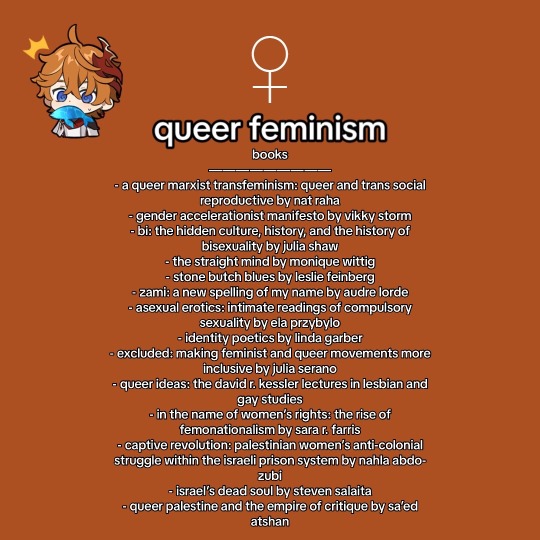
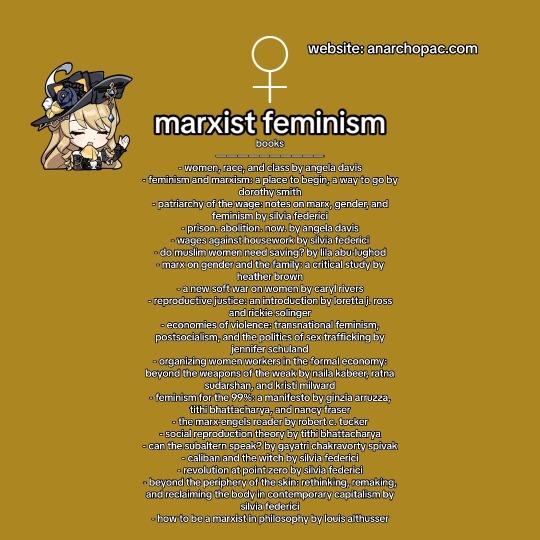
additional resources to marxist feminism:
living a feminist life by sara ahmed
the rise and decline of patriarchal systems by nancy folbre
this bridge called my back: writings by radical women of color by cherrie moraga and gloria anzaldua
delusions of gender: how our minds, society, and neurosexism create difference by cordelia fine
close to home: a materialist analysis to women's oppression by christine delphy
(pdf) the feminist standpoint: developing the ground for a specifically feminist historical materialism
(medium) on women as a class: materialist feminism and mass struggle by aly e
(sagejournals) capital and class: the unhappy moments of marxism and feminism: towards a more progressive union
(substack) the marxfem pulpit by abigail von maure (earth2abbs on tiktok)
if anything else related to marxist feminism, just let me know :)
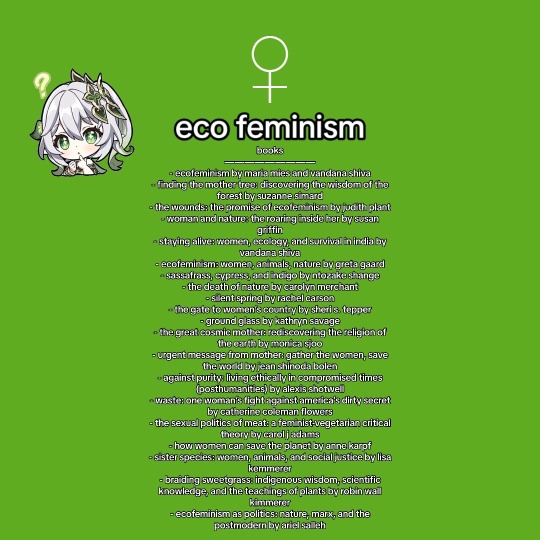
additional resources to eco feminism:
gossips, gorgons, and crones: the fates of the earth by jane caputi
parable of the sower by octavia e butler
neither man nor beast: feminism and the defense of animals by carol j. adams
bitch: on the female of species by lucy cooke
fresh banana leaves: healing indigenous landscapes through indigenous science by jessica hernandez
the intersectional environmentalist by leah thomas
right here, right now by natalie isaacs
feminism or death by francoise d'ealibonne
violent inheritance: sexuality, land, and energy in making the north american west by e cram
animal crisis: a new critical theory by alice grary
unsettling: surviving extinction together by elizabeth weinberg
land of women by maria sanchez
sexus animalis: there is nothing unnatural in nature by emmanuelle pouydebat
windswept: walking the paths of trailblazing women by annabel abbs
andrea smith - rape of the land
andy smith - ecofeminism through an anticolonial framework
carolyn marchant - nature as female
charlene spretnak - critical and constructive contributions of ecofeminism
heather eaton - ecological feminist theology
heather Eaton - The Edge of the Seat
janet abromovitz - biodiversity and gender Issues
joni Seager - creating a culture of destruction
karen warren - ecofeminism
karen warren - taking empirical data seriously
karen warren - the power and promise of ecological feminism
l. gruen - dismantling oppression
martha e. gimenez - does ecology need marx?
n. sturgeon - the nature of race
petra kelly - women and power
quinby - ecofeminism and the politics of resistance
rosemary radford ruether - ecofeminism: symbolic and social connections
sherry ortner - is female to male as nature is to culture?
sturgeon - the nature of race
val plumwood - feminism and ecofeminism
winona laduke - a society based on conquest cannot be sustained
if anyone has any other recommendations related to eco feminism, plz let me know :)
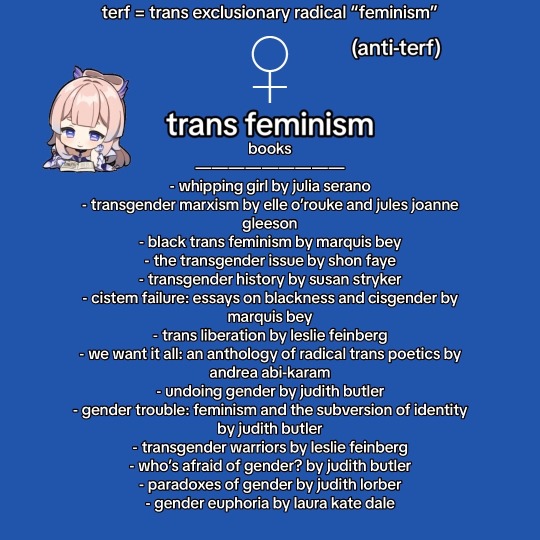
additional resources related to trans feminism:
the empire strikes back: a posttransexual manifesto by sandy stone
(chicago journals) trapped in the wrong theory: rethinking trans oppression and resistance by talia mae bettcher
(philpapers.org) trans women and the meaning of woman by talia mae bettcher
the transgender studies reader by susan stryker and stephen whittle
if anyone has other recommendations related to trans feminism, plz let me know :)

additional resources related to anarcha feminism:
the anarchist turn by jacob blumenfeld
we will not cancel us and other dreams of transformative justice by adrienne maree brown
burn it down: feminist manifestos for the revolution by breanne fahs
reinventing anarchy, again by howard ehrlich
anarcho-blackness by marquis bey
a little philosophical lexicon of anarchism from proudhon to deleuze by daniel colson and jesse cohn
joyful militancy by nick montgomery and carla bergman
wayward lives, beautiful experiments by saidiya v. hartman
we won't be here tomorrow and other stories by margaret killjoy
writing revolution by christopher j. castaneda
paradoxes of utopia by juan suriano
twelve fingers by jo soares
for a just and better world by sonia hernandez
if anyone has other recommendations related to anarcha feminism, plz let me know :)
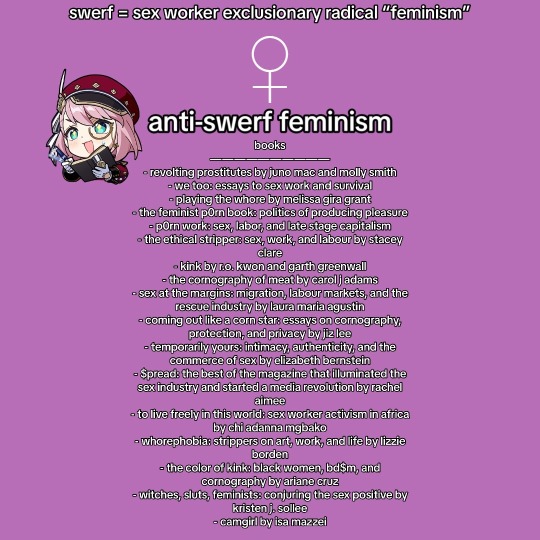




#feminism#intersectionalfeminist#intersectionality#anti terf#anti swerf#womens rights#marxist feminism#eco feminism#anarcha feminism#trans feminism#queer feminism#pro lgbtq+#pro disabled#pro trans#pro palestine#pro sex worker
40 notes
·
View notes
Text
Current Events Reading Reccs
I had a couple of people asking me about my “current events” reading in general (news aggregators, podcasts, etc) so I figured I’d just list them off here.
I don’t read any tumblrs that are specifically focused on current events, I just kinda get news from various people I’ve followed, but I’ve found in general it helps to find people for whom the news is a hobby, not a consuming habit. I have communists and anarchists and prison abolitionists on my dash, but they aren’t people who have made that their identity, which removes the “You are insufferable” factor. So I guess find fandom weirdos with strong political views and follow ‘em.
Also I want to state at the top that part of why I’m on top of shit that I get through Tumblr is that I have a policy of never reblogging or reacting to anything until I have 1. read the article being linked and 2. done my own research. This has saved me a vast deal of embarrassment, because sometimes I’ll save something outrageous to research and before I can even research it, it’s been rebutted. I cannot stress how important the process of reading and research is -- you can’t get your news from headlines and particularly not clickbait you see on Tumblr.
As far as I know there’s no single tumblr clearinghouse for good high-level current events reporting and analysis (the analysis I think is a vital part) but if folks have resources they use, drop ‘em in the comments or reblogs.
Anyway, some mailing lists I belong to are:
Quartz Daily Brief: finance and tech, mainly. Back when they were for-pay I paid for them, this newsletter was that entertaining. I believe they’ve now gone fee-free but they sometimes link to paywalls. I get it as an email newsletter, that’s just a link to the web version.
Breakfast with ARTNews: Obviously a bit niche but I really like keeping up with the art world and they cover art crime too. The link is to the all-newsletters signup page, I only belong to Breakfast.
The Futurist: This is the most insufferable nonsense masquerading as news ever. The ads are indistinguishable from the content. But it does help me keep a finger hard on the pulse of what irritating tech bros are into. Watch scams unfold in real time!
I also follow a number of local interests -- community centers and neighborhood organizations primarily -- in Chicago, so those are always good to hunt up. Most major cities have a “citycast” podcast (just search “citycast [your city]” in your podcatcher) that is also good for local news.
Some websites:
Longreads: Since longform.org went under, the best place to find the current longform pieces that everyone’s talking about.
Brand Eating: Extremely niche, but I really love reading about “brand” food trends. It covers new food releases and sales and such in the areas of packaged food (potato chips, candy, etc), fast food, and casual dining. It’s also great as a resource for cheap eats.
I stopped reading Bon Appetit recently (they ran this appallingly sympathetic story about a dickhead hiring manager) but like, honestly, if you want to track food trends, the BA email newsletter is kinda the way to go. If you’d like good food news in podcast form, I recommend The Sporkful (it’s in the podcast list).
I used to read the Chicago Tribune, New York Times, and Fortune Magazine (which mostly scraped the not-awful stuff from Forbes) but I’ve cut it down to just the Trib; I don’t really need Fortune to keep me current and the NYT has morphed into a creepy proto-fash nightmare. The Trib has pretty good national/international coverage so if you don’t have a decent local paper it’s not bad, but I don’t know how much access you get as a nonpaying reader (I subscribe).
Podcasts:
Quartz has a podcast, Quartz Obsession, which is off-and-on in terms of when episodes come out but very interesting when they do.
Planet Money is a once-weekly podcast about economics, and has a daily show called “The Indicator” which is daily “small bites” current events coverage.
The Late Show and the Daily Show both have an “ears edition” podcast that’s just the show audio; I’ve stopped listening for the most part but if you want good cultural commentary, that’s the place to go.
The Journal by the Wall Street Journal is a weekly podcast focusing on one or two news stories, generally pretty relevant.
Wait Wait Don’t Tell Me is a panel show but it’s a fun way to get bite-sized news you can look up later in more detail if you want. And it’s taped in Chicago! If you listen you can hear me in the audience laughing. :D (I’m going to another taping in a few weeks!)
Behind The Bastards is actually a history podcast but if you’re listening current he does a bit of current-events commentary, and also I just really like it as a podcast.
Stuff You Should Know is a trivia podcast but they occasionally do current-events stuff.
The Sporkful is pretty good about current food news, although I run hot and cold on it.
I used to listen to a really good “professional” medical podcast, but it went full paywall when it started to offer certain forms of professional credit, so I found The House Of Pod as a very good free replacement. It’s not really for non-doctors, but as a non-doctor I still find it accessible and informative. (For medical history and curiosity, I do highly recommend Bedside Rounds, but I wouldn’t call it a current events cast.)
So that’s how I get my news -- it’s not what I would call fully comprehensive but it’s reasonably informative!
157 notes
·
View notes
Text
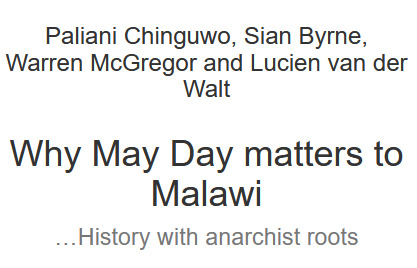
Storm centre
Chicago was the storm centre: the third largest US city where the elite flaunted its wealth in the face of poor American and immigrant workers. Chicago saw the largest 1 May demonstrations, against the backdrop of terrible working conditions and poverty, worsened by economic depression.
The power of the Chicago movement rested not just on numbers, but also on revolutionary ideas. It was the anarchist International Working People’s Association (IWPA) that led the massive march of 80 000 people through Chicago, growing during the following days to 100 000.
IWPA leadership included black women like ex-slave Lucy Parsons, immigrant workers like Spies and Americans like Oscar Neebe and Albert Parsons.
Its Pittsburgh Proclamation called for ‘the destruction of class rule through energetic, relentless, revolutionary and international action’ and ‘equal rights for all without distinction of sex or race.’
Internationalist in outlook, the IWPA and the Chicago-based anarchist Central Labour Union (CLU) it led, fought for all working and poor people, regardless of race or nationality. It published 14 newspapers, organised armed self-defence and mass movements, and created a rich tapestry of revolutionary counter-culture like music.
Anarchists rejected elections in favour of mass organising and education. Elections, the IWPA said, achieved nothing much: the State was part of the system of elite rule; politicians were corrupted into the ruling elite. Instead, most IWPA activists stressed unions as the basis for genuine workers’ and farmers’ democracy: unions should undertake factory occupations, leading to an anarchist (free) society.
#history#Malawi#May Day#labor#malawian politics#anarchism#resistance#autonomy#revolution#community building#practical anarchism#anarchist society#practical#anarchy#daily posts#communism#anti capitalist#anti capitalism#late stage capitalism#organization#grassroots#grass roots#anarchists#libraries#leftism#social issues#economics#anarchy works#environmentalism#environment
16 notes
·
View notes
Text
Abortion Zines
The following collection of zines has been circulating throughout the anarchist space since the overturning of Roe vs. Wade in the United States. We're reposting the collection here and re-uploaded them to Archive.org in order to maintain access for the future. We encourage folks to circulate these zines as you see fit.
Abortion Positive Coloring Book for Hard Times
Abortion is a Form of Birth Control! And Why Having One isn't that Big of a Deal
Abortion Aid in Texas
Abortion Pills by Mail
A Totally Undramatic Story about Abortion
Blood Moon: A Guide on How to Bleed
DIY Doula Self-Care for Before, During, and After Your Abortion
Free to Choose: A Women's Guide to Reproductive Freedom
Hot Pantz: DIY Gynecology / Herbal Remedies
How to Give Yourself an Abortion
Jane: Documents from Chicago's Clandestine Abortion Service
The Battle for Abortion and Reproductive Autonomy with Bay Ostrach
What is this Thing Called M.E.?
Who is Fit for Motherhood? Why Abortion is Not the Only Reproductive Right
Why is the Government Like This? A zine about fighting for abortion access and reproductive justice in the age of COVID-19 (Spanish Version)
Additionally, the collection circulating features a non-zine pamphlet:
Medical Abortion and Self- Managed Abortion: Frequently Asked Questions on Health and Human Rights (Spanish Version)
If you have additional suggestions for this collection, please get in touch. We'll update this list accordingly.
646 notes
·
View notes






